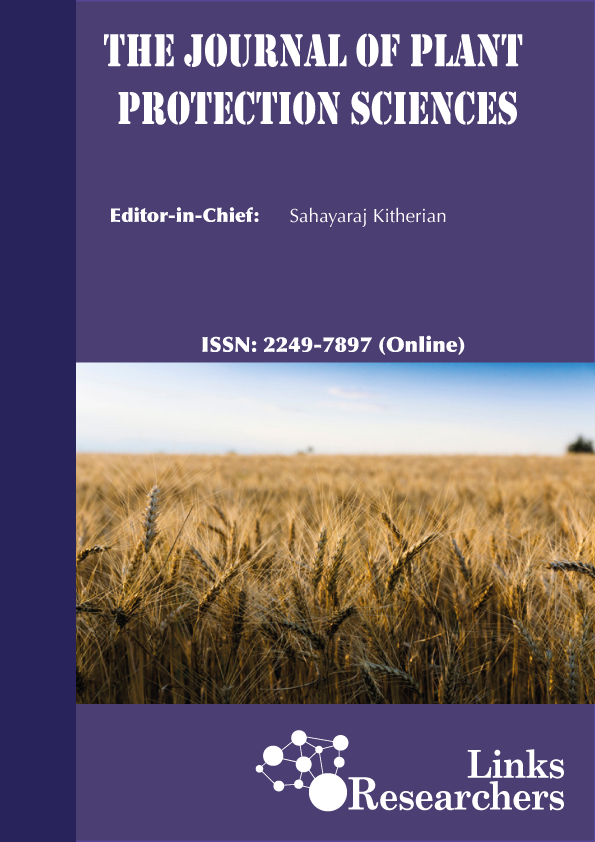Khalid Usman, Aziz-Ur-Rehman
Nagina Zeb, Muhammad Sajid, Abdul Mateen Khattak and Imtiaz Hussain
Abida Saleem, Sajida Parveen and Muhammad Jamal Khan
Muhammad Shafiq and Tahir Maqsood
Dilawar Hussain* and Abdul Mateen
Sitansu Pan and Amrita Das
Ghani Akbar1, Steven Raine2, Allen David McHugh3, Greg Hamilton4 and Qurban Hussain5
Nazakat Nawaz, Malik Shah Nawaz*, Nasir M. Cheema** and Mubashir A. Khan*
Corresponding author:nazakat_nawaz@yahoo.com
Tosif Tabassam*, Tariq Sultan**, M.Ehsan Akhtar**, M.Mahmood-ulHassan** and Arshad Ali**
Ali Raza Shah**, Muhammad Saffar Mirjat**, Abdul Quadir Mughal***, Inayatullah Rajper** and Asif Ali Mirani****
Azhar Usman Ali*, Ghulam Sarwar*, Muhammad Aftab* and Sher Muhammad**
Malik Muhammad Yousaf1*, Mumtaz Hussain1, Muhammad Jahangir Shah1, Bashir Ahmed1, Muhammad Zeshan1,2, Muhammad Mohsin Raza1 and Kazim Ali2
Shamsher Ali1, Zakir Ullah Jan1*, Zahir Shah2, Muhammad Jamal Khan2, Farmanullah Khan2, Inayat ur Rahman3 and Shah Fahad3
Ambrin Rajput*
Yousaf Ali1, Muhammad Zamin1*, Ibadullah Jan1, Shahen Shah2, Muhammad Mazhar Hussain3, Fazli Rabbi4 and Muhammad Amin5
Ayesha Zafar1, Ghulam Sarwar1*, Muhammad Sarfraz2, Muhammad Zeeshan Manzoor1, Sher Muhammad3 and Ghulam Murtaza1
Inamullah Khan1*, Amjad Usman2 and Rahamdad Khan2
Muhammad Waseem*, Irshad Ahmad**, Muhammad Asif Khan**
Saleem Maseeh Bhatti1*, Aslam Khan Gadehi1, Inayatullah Rajpar1, Muhammad Nawaz Kandhro2, Mukesh Kumar Soothar1 and Zohaib Ur Rehman Bughio1
Amar Iqbal Saqib, Khalil Ahmed*, Muhammad Khalid Bhatti, Ghulam Qadir, Muhammad Qaisar Nawaz, Muhammad Ashfaq Anjum, Abdul Rasul Naseem, Aftab Ahmad Sheikh and Belqees Akhter
Mazhar Ullah and Mohammad Sayyar Khan*
Shorouk Aladdin Helmy1, Hossam Mahrous Ebeid2*, Mohamed Ahmed Hanafy1, Adel Eid Mohamed Mahmoud1, Reham Roshdy Ali El-tanany1
Inam Ul Haq1*, Muhammad Ramzan1, Mansoor Khan Khattak1 and Ahmad Khan2
Layth Saleem Salman Al-Shihmani
Talat Farid Ahmed1*, Muhammad Azeem Afzal1, Hashim Nisar Hashmi2, Hafiz Muhammad Yousuf2, Shamim-ul-Sibtain Shah1 and Muhammad Atiqullah Khan1
M.M.A. Youssef and A.M.S. Lashein†
Rahim Bux Vistro1*, Mashooque Ali Talpur1, Irfan Ahmed Sheikh1, Muneer Ahmed Mangrio2, Rajish Kumar Soothar1, Mian Noor Hussain Asghar Ali3,4, Imran Ali Dhamach4, Muhammd Urs Mirjat1 and Abdul Saboor Soomro2
Rashid Saraz1, Saiqa Amur1, Zia-ul-Hassan1*, Naheed Akhter Talpur1, Inayatullah Rajpar1, Muhammad Sohail Memon2, Muhammad Nawaz Kandhro3, Khalid Hussain Talpur1 and Nizamuddin Depar4
Iqtidar Hussain1, Ejaz Ahmed Khan1, Jawad Nazir and Ehtesham-ul-Haq1










